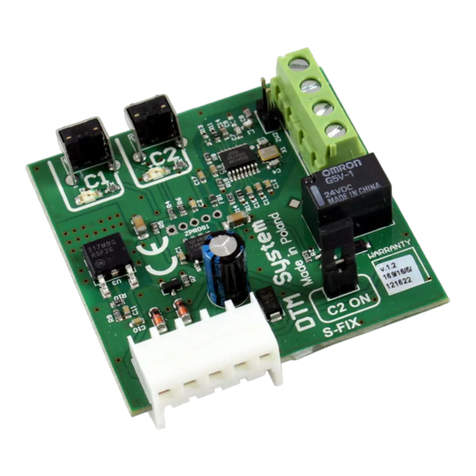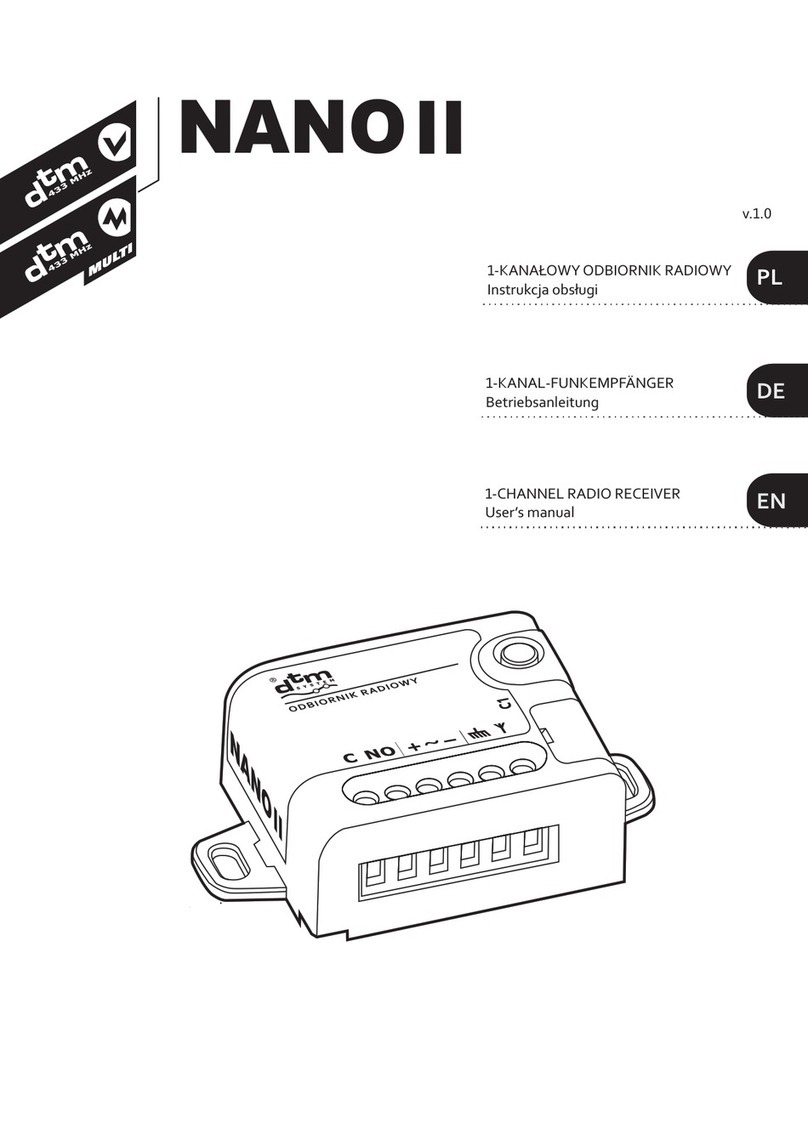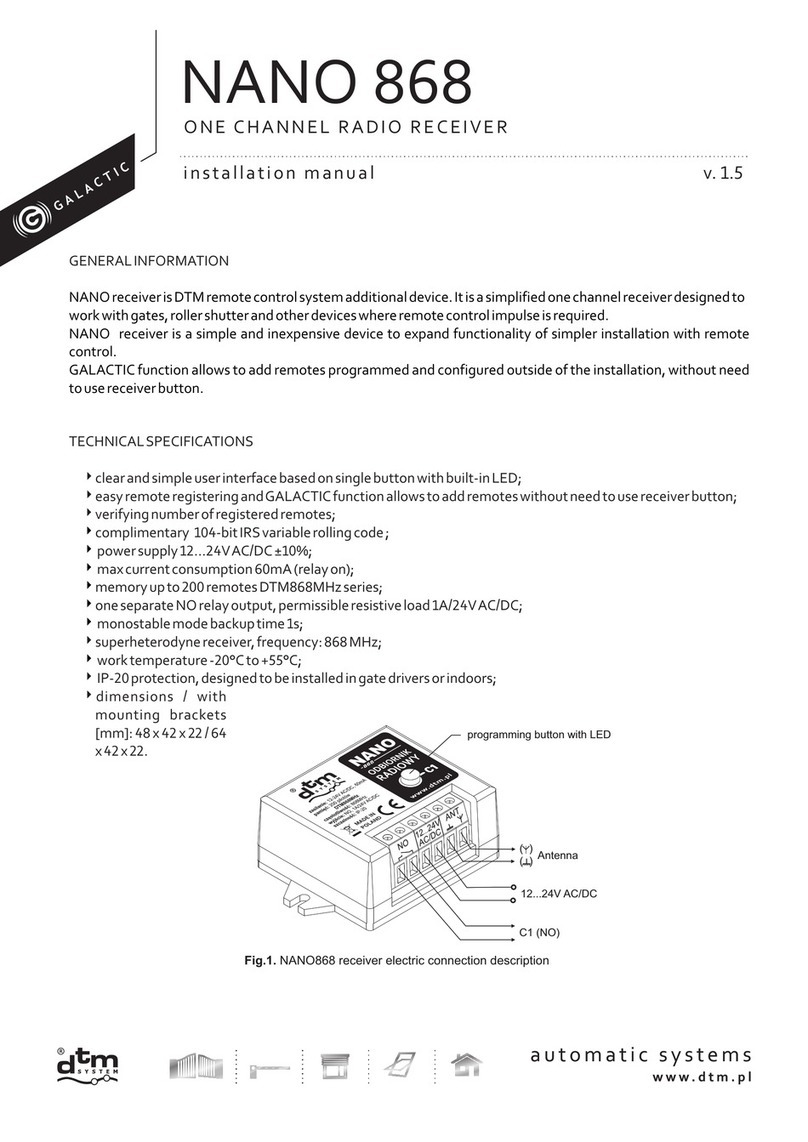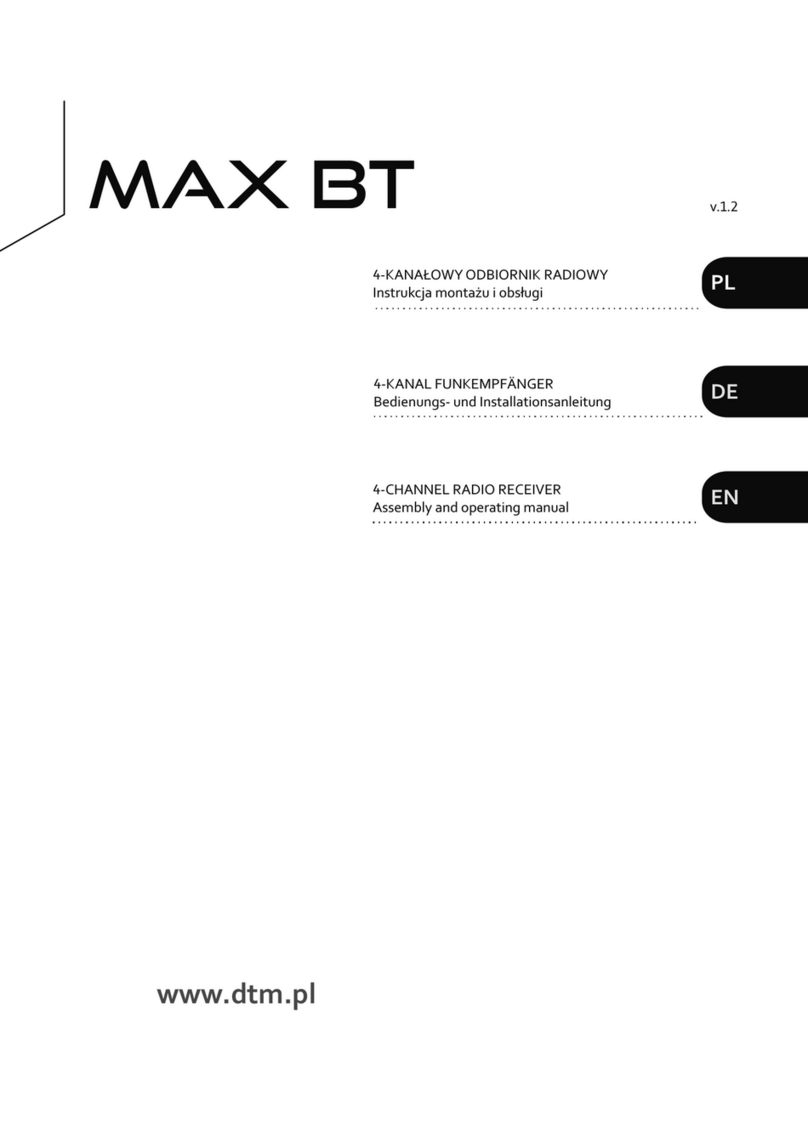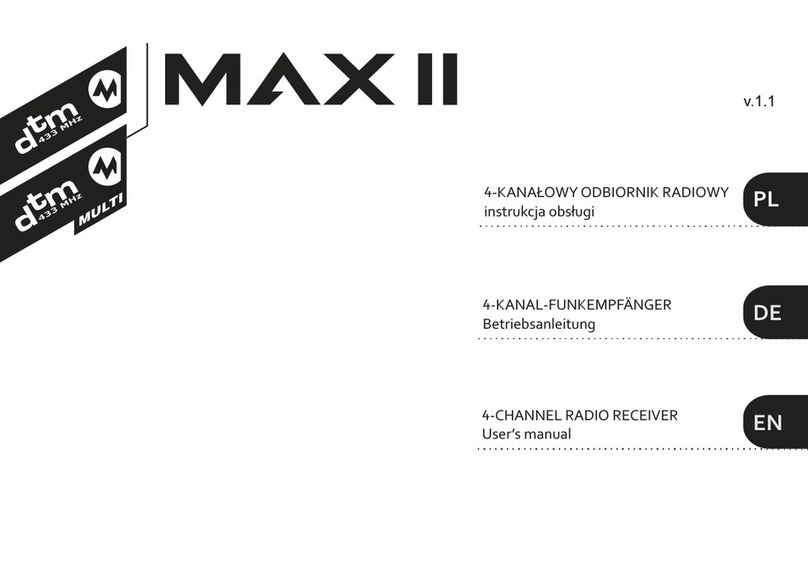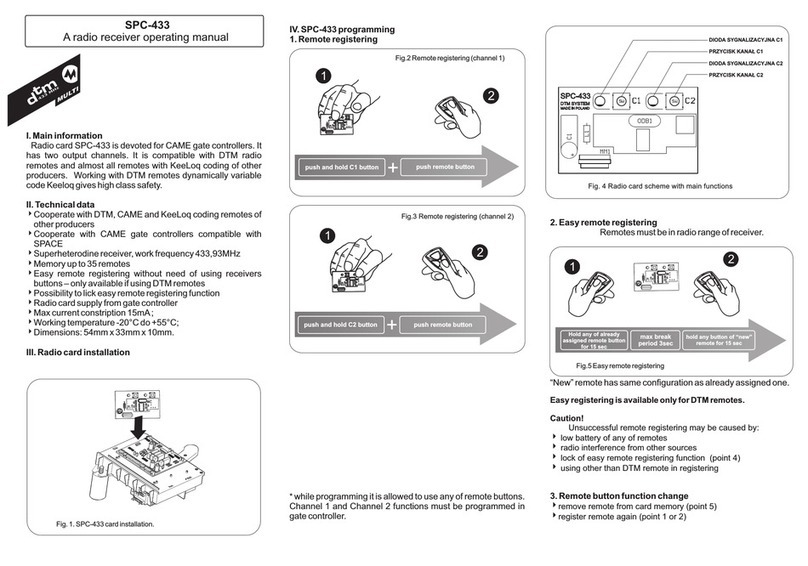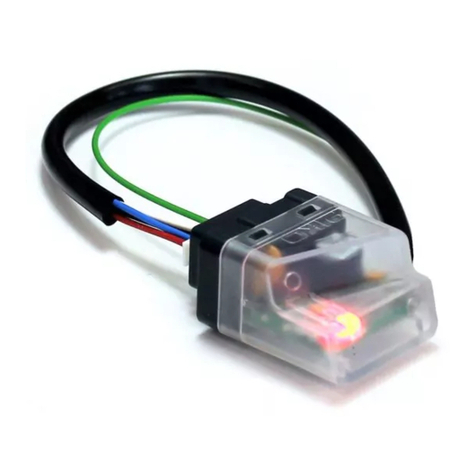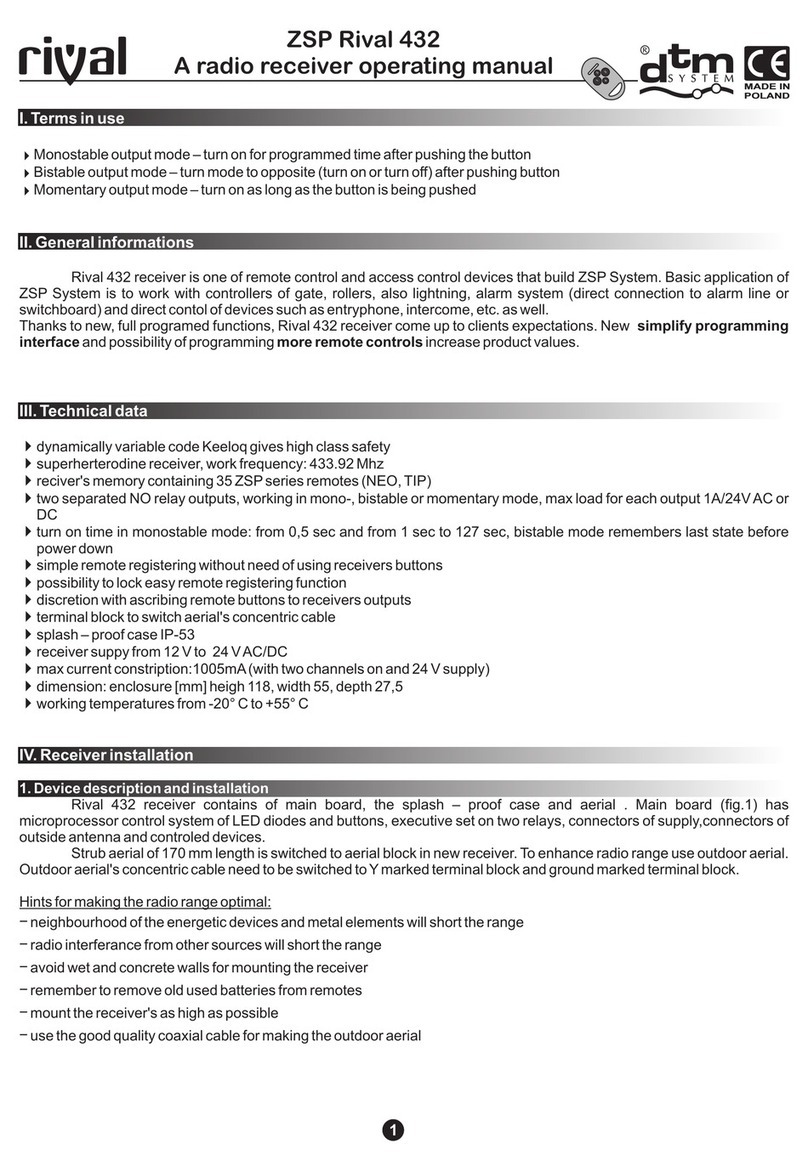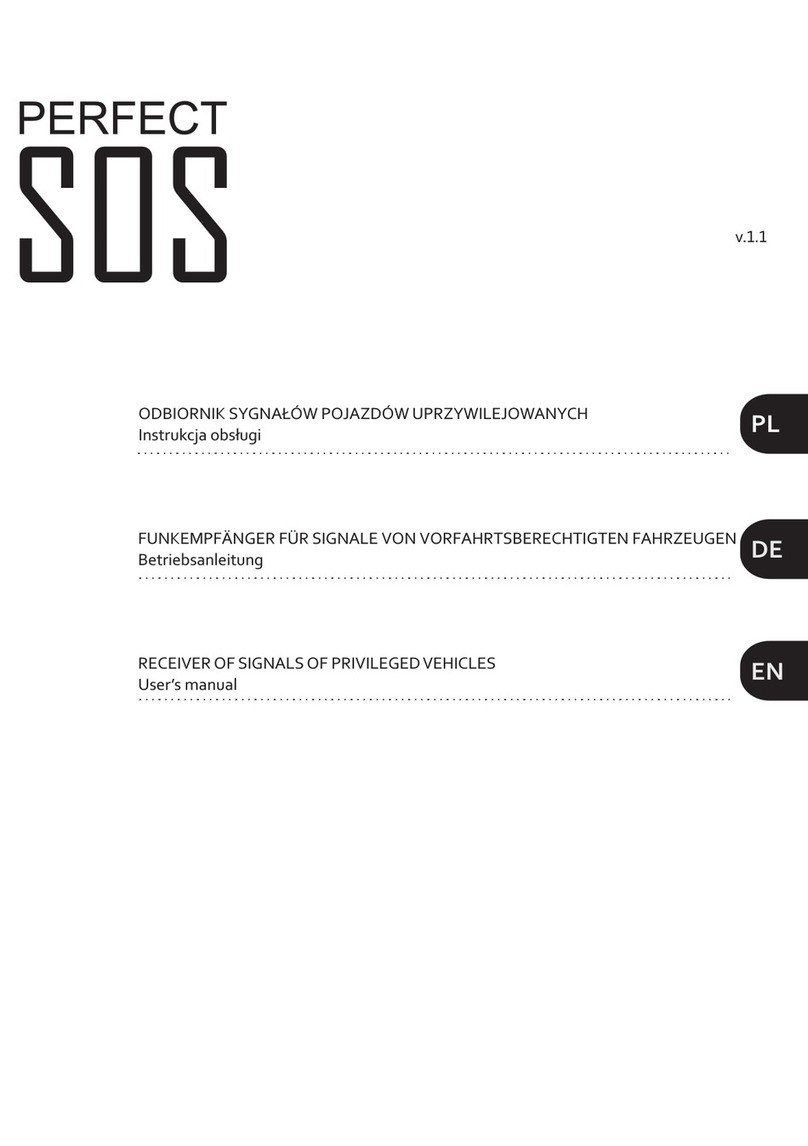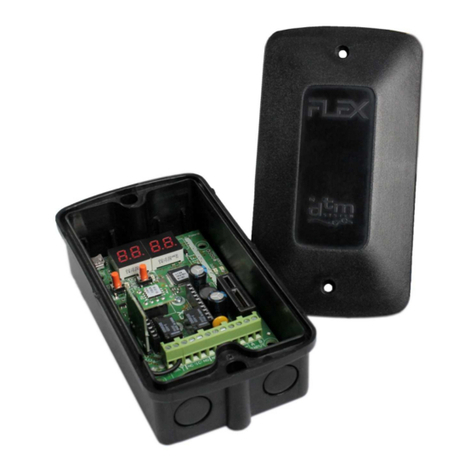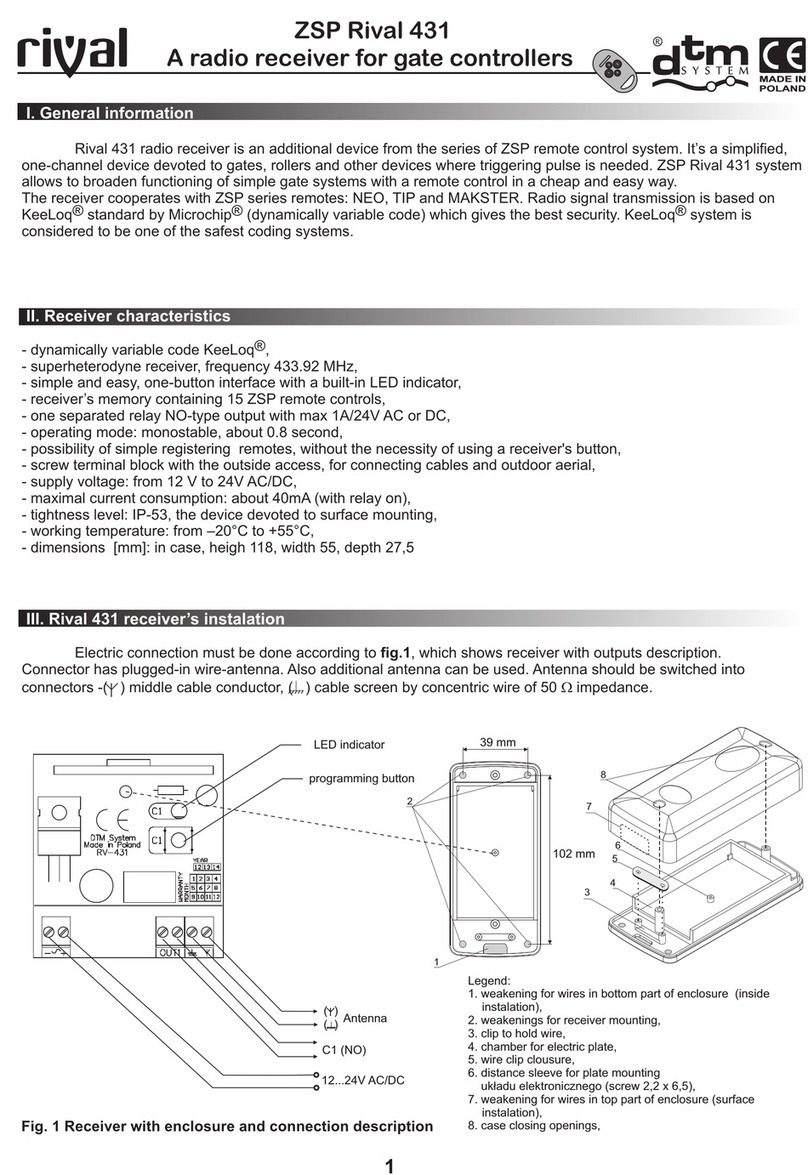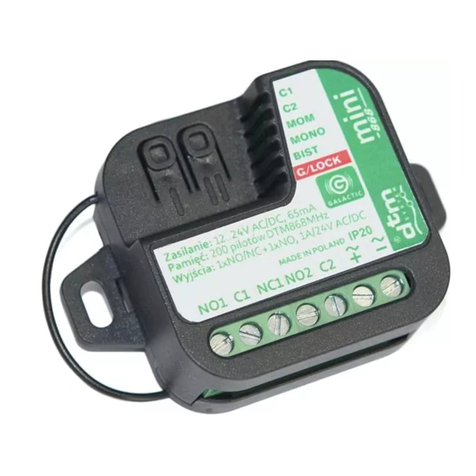devices, manual control buttons and aerial. Case has bottom and side weakenings to mount receiver and installation
wires. After making hole in the receiver case mount rubber gland available in set.
2. Electrical connection
Power supply
Aerial
– 230V supply input. Power supply circuit should be fuse protected. Use cable suitable for controlled
devices power.
.
– radio receiver aerial. Sturb aerial of 170 mm length is switched to aerial block in new receiver. To enhance radio
range use outdoor aerial. Outdoor aerial's concentric cable should be switched to Y marked terminal block and ground
marked terminal block.
- neighborhood of the energetic devices and metal elements will short the range
- radio interference from other sources will short the range
- avoid wet and concrete walls for mounting the receiver
- remember to remove old used batteries from remotes
- mount the receiver's outdoor aerial as high as possible
- use the good quality coaxial cable for making the outdoor aerial
Channel 1 and 2
IN1 and IN2
– two relay outputs NO/NC type. Max loads of 600W. Use cable suitable for controlled device power
– information inputs (low voltage) NO type for manual control (of output 1 and 2). Manual control buttons
are priority over remote buttons (manual control on prevents output remote control) That is why it is recommended to use
momentary buttons only for manual control. Recommended cable - twisted pair.
Hints for making the radio range optimal:
Fig. 1 Receiver board scheme
*Use only momentary buttons for manual control
2
12
12
2
1
3
4
2
3
4
12
Fig. 2 DTM System remote controls
2
Outputs:
Channel 1
Channel 2
Power supply
Power supply
signalling
Working mode
signalling
Momentary
Monostable
Bistable
Channel 1 turn on signalling
Channel 2 turn on signalling
Aerial
Screen
Manual
controll:
Channel 1*
NO
Channel 2*
NO
Programming
buttons:
MODE jumper
to block programming
Channel 1
Channel 2
3
V. Programming
Universal receiver has capability of programming that influence it's working mode. Before programming fimilarize with
. Next to LED diodes there are short descriptions of signaling function. Output channels can be controlled by
remote control buttons or momentary buttons switched to manual control inputs. Manual control is priority mode over
remote control mode.
Push and hold chosen output programming button (C1 or C2), push chosen remote control button. LED diode
will blink.
To remove single remote control from receiver's memory push and hold simultaneously both programming output
buttons . All LED diodes will blink. While diodes blink push any button of remote control that you want to remove.
Diodes wane and remote control will be removed.
For monostable mode check
To change working mode C1 or C2, push and release chosen output button (C1/C2), red LED diode will light
(OUT1/OUT2) and yellow LED diode which shows actual working mode will light. Push output channel button several
times to set desired working mode. Yellow LED diode with MOM sign for momentary mode, BIST sign for bistable,
MONO sign for monostable (check point 4) To approve working mode push and hold output button (C1/C2). Red LED
diode which shows edited output will blink and wane. Working mode is registered.
For monostable mode push and release chosen output button (C1/C2), red LED diode will light (OUT1/OUT2) and yellow
LED diode which shows actual working mode will light. Push several times output button (C1/C2) to set monostable
mode, signalized by yellow LED diode with MONO sign. To approve push and hold edited output button (C1/C2). LED
diode with MONO sign wane and than start to blink. Hold button (C1/C2) for wanted turn on time and release button.
Number of LED diode blinking set time in seconds (or minutes if after releasing in short time button is being pushed for
second again).
To set turn on time 0,5s release C1/C2 button before yellow diode with MONO sign start to blink.
To format receiver memory push and hold simultaneously C1 and C2 buttons. All LED diodes will pulsate. Release
buttons when LED diodes wane (after about 15 seconds). Receiver memory has been formated.
fig. 1
Button registering
OUT1/OUT2
Remarks! Releasing output button (C1/C2) before remote control button pushing cause output working mode
programming. (point 3) To quit working mode programming function push shortly next output button.
2) Single remote control removing.
(C1/C2)
3) Output Working mode change (C1/C2) to bistable or momentary
Output factory settings:
C1 output working mode –bistable
C2 output working mode –monostable (0,5s)
point 4
4) Output working mode change (C1/C2) to monostable
Remarks!
Receiver's memory formating
Remarks! Format is irreversible. All remotes will be removed and receiver return to factory settings (channel 1
in bistable, channel 2 monostable 0,5s turn on time)
Special jumper (fig.1) to secure from unwanted programming must be in position for availability
of all programming functions. If jumper is in position only remote registering function is available. (point 1)
Remote registering is to assign remote button to receiver output.
MODE
MODE LOCK
1) Remote control registering
UNLOCK
